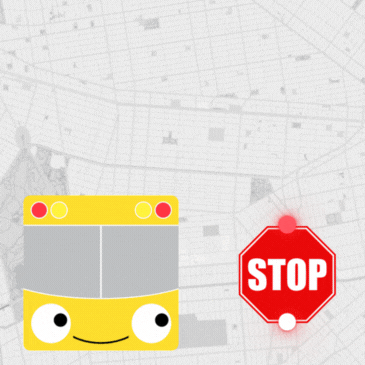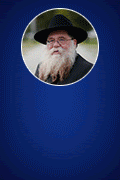1. In this week’s Torah portion the Torah recounts how every single Jew- men, women, and children- donated all kinds of materials for the construction of the Mishkan (the Tabernacle) to their hearts content.
2. The Rebbe now contrasts the donations given in this week’s Torah portion with the Ma’cha’tzis Ha’sheh’kel (half of a coin called a “Shekel”) that the Jewish people gave to the Mishkan earlier in last week’s Torah portion:
The Weekly Sedra – Parshas Vayakhel
The Rebbe says:
1. In this week’s Torah portion the Torah recounts how every single Jew- men, women, and children- donated all kinds of materials for the construction of the Mishkan (the Tabernacle) to their hearts content.
2. The Rebbe now contrasts the donations given in this week’s Torah portion with the Ma’cha’tzis Ha’sheh’kel (half of a coin called a “Shekel”) that the Jewish people gave to the Mishkan earlier in last week’s Torah portion:
The Ma’cha’tzis Ha’sheh’kel donation substantially differed from this week’s donation. Firstly, it was only given by Jewish men over the age of twenty- no women or children participated in this donation; unlike this week’s donation which every single Jew participated in. Secondly, the amount given was a specified type and amount- half of a coin called a “Shekel”, as the Torah stipulates, “The wealthy shall not increase and the destitute shall not decrease”; unlike this week’s donation where the Jewish people gave as much as their hearts desired of whatever material they felt like giving.
3. The Rebbe now explains the inner reason for the entire nation’s participation in this week’s donation:
Our Sages tell us the sin of the golden calf was an all encompassing sin that affected every member of the Jewish nation, even small children, and the construction of the Mishkan was part of the cleansing process for the Jewish people to purify them from their sin of the golden calf,. Therefore, when it came time to donate for the building of the Mishkan, which was part of the purifying process, every single member of the Jewish people participated in it.
4. The Rebbe now questions and redefines this explanation:
Our Sages also tell us that the Ma’cha’tzis Ha’sheh’kel donation was part of the cleansing process from the sin of the golden calf! This being case, shouldn’t the whole nation have participated in this donation as well?
Consequently, we must say that there was two parts of the cleansing process; one part was accomplished by the men over the age of twenty, and one part was accomplished by every single Jew- men, women, and children.
The Rebbe now sets out to explain the two part cleansing process.
5. Being that the sin of the golden calf was a form of avodah zarah (idol worship); the Rebbe now defines what avodah zarah is, how we should counteract it, and how this connects to the Mishkan (which was the antithesis of the sin of the golden calf):
The sin of avodah zarah does not only mean that one denies the existence of G-d; it can also come in the form of thinking that there are other sources of life besides for Hashem (G-d) Heaven Forbid. Actually, avodah zarah can come in an even more genteel manner; if one thinks that there is any existence whatsoever outside of Hashem he is practicing avodah zarah.
The opposite feeling of avodah zarah is to recognize that not only is there only one G-d and no other sources of life besides Him, but that there is absolutely nothing besides for Him; the entire world, with all its details and features, is all part of Hashem.
We see this point from our forefather Avraham (Abraham). The Torah tells us that Avraham Avinu (Abraham our forefather) went around proclaiming to the world, and causing the world to join in and proclaim, “G-d is the world”; they did not say, “G-d of the world”, which would mean that there is a world and there is a G-d and this G-d is the G-d/owner of the world, they said, “G-d is the world”- the whole world is a part of G-d.
When one realizes that “Hashem is the world”, and not that Hashem is merely the Owner and King of the world, he will be intent on having all his deeds for the sake of Heaven, and even more, he will want to know Hashem in all his ways,.
In the same vein, the Mishkan was a place where Hashem rested in every single detail and facet. Therefore, as we said earlier, building the Mishkan was part of rectifying the wrong they had done by sinning with the golden calf- avodah zarah.
6. The Rebbe now finishes off and explains the need for the Ma’cha’tzis Ha’sheh’kel donation from the twenty year old men and this week’s donation from the entire nation:
Before we are able to have all our deeds for the sake of Heaven and know Hashem in all our ways, we must first prepare ourselves. Our entire being, with all its abilities and gifts, must be ready for Hashem to rest in us; more specifically, for Hashem’s Etzem (core/essence) to rest in our Etzem (core/essence).
Bearing this in mind, we can understand that this preparation must come from our Etzem (so that Hashem’s Etzem can rest in our Etzem) and must permeate all of our faculties (so that we can bring Hashem into every aspect of our lives).
Therefore, the first donation to the Mishkan, the donation which was used to make the foundation (the Adonim) of the Mishkan, was a set amount of money which was equal by everybody and was given only by men of twenty years and up:
Every single Jew, without exception, has the same precious Etzem. No Jew can be said to be worth more than another Jew. Therefore, the preparation for the Mishkan, which we said has to be done from the Etzem, had to be done in a way which expresses the equality of Jews; hence, the Ma’cha’tzis Ha’sheh’kel donation was the same amount for every giver.
Additionally, as we said earlier, the preparation for the Mishkan had to be done in a way that enabled Hashem to permeate every faculty of the Jew. Therefore, only men from the age of twenty years and up, who have all of their faculties in a complete form, were able to donate.
After the foundation for the Mishkan was made, every single Jew was encouraged to donate and be a part of bringing Hashem down into this world.
Translated and adapted by Rabbi Shalom Goldberg. Taken from Likutei Sichos volume three.














